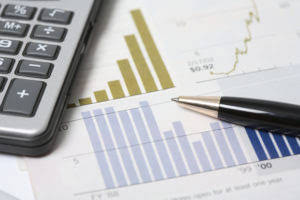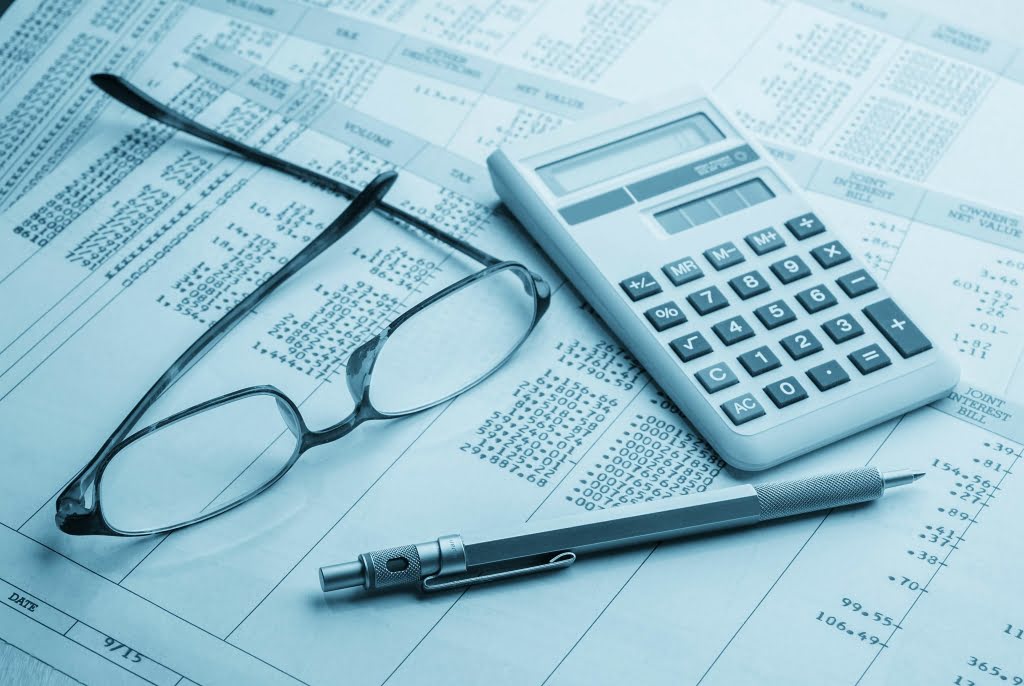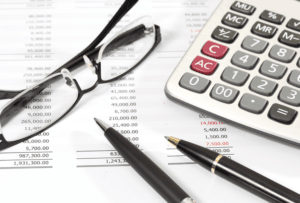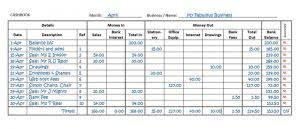Because of this, managers have some ability to game the numbers to look more favorable. Pay attention to the balance sheet’s footnotes in order to determine which systems are being used in their accounting and to look out for red flags. If the same assumptions are applied for the next year, the end-of-period shareholders equity balance in 2022 comes out to $700,000. Note that the treasury stock line item is negative as a “contra-equity” account, meaning it carries a debit balance and reduces the net amount of equity held. Otherwise, an alternative approach to calculating shareholders’ equity is to add up the following line items, which we’ll explain in more detail soon. Under a hypothetical liquidation scenario in which all liabilities are cleared off its books, the residual value that remains reflects the concept of shareholders equity.
Advantages and Disadvantages of Capital Stock
To calculate the additional paid-in capital, subtract the total par value of the common stock from the total amount of cash that the company has received from issuing the shares. For example, if a company has received $120,000 from issuing 100,000 shares of common stock with a par value of $0.01 per share, the additional paid-in capital would be $119,000. The first step in calculating common stock on the balance sheet is to determine the total par value of the common stock. To find the total par value of common stock, multiply the number of outstanding shares by the par value per share.
- We have seen how common stock represents the ownership stake held by shareholders and serves as a vital component of a company’s equity.
- Part of the ROE ratio is the stockholders’ equity, which is the total amount of a company’s total assets and liabilities that appear on its balance sheet.
- They represent returns on total stockholders’ equity reinvested back into the company.
Understanding the Basics of Common Stock
Stockholders’ equity is equal to a firm’s total assets minus its total liabilities. These earnings, reported as part of the income statement, accumulate and grow larger over time. At some point, accumulated retained earnings may exceed the amount of contributed equity capital and can eventually grow to be the main source of stockholders’ equity.
How Balance Sheets Work
Investing in common stock means you’re putting your money into a part of the company’s journey. Understanding how dividends, voting rights, and the value shown in financial reports affect your investment as a stockholder can help you make smarter choices. Always remember, investing is not just about making money; it’s about being part of a company’s story and holding a stake as a common stockholder. Dividends are like little rewards that companies give to their shareholders out of their profits.
How common stock is traded on the stock exchange?
Since repurchased shares can no longer trade in the markets, treasury stock must be deducted from shareholders’ equity. When a common stock has a stated or par value, multiply https://www.bookkeeping-reviews.com/ the number of shares outstanding by the stated or par value per share. This amount is recorded as common stock on a balance sheet in the shareholder’s equity section.
Instead, as a shareholder, you own a residual claim to the company’s profits and assets, which means you are entitled to what’s left after all other obligations are met. To arrive at the total shareholders’ equity balance for 2021, our first projection period, we add each of the line items to get to $642,500. From the beginning balance, we’ll add the net income of $40,000 for the current period, and then subtract the $2,500 in dividends distributed to common shareholders.
Common stockholders have voting rights that allow them to participate in important decisions that affect the company’s future. By calculating the number of shares outstanding, the company can determine how many votes each shareholder is entitled to. Although the balance sheet is an invaluable piece of information for investors and analysts, there are some drawbacks. For this reason, a balance alone may not paint the full picture of a company’s financial health.
A balance sheet only shows you a company’s financial status at one point in time. If you want to know how a company’s assets and liabilities have changed over time, you will need to have historical balance sheets to compare. Treasury shares continue to count as issued shares, but they are not considered to be outstanding and are thus not included in dividends or the calculation of earnings per share (EPS). Treasury shares can always be reissued back to stockholders for purchase when companies need to raise more capital. If a company doesn’t wish to hang on to the shares for future financing, it can choose to retire the shares.
In the event that the company issues stock at a premium, the following journal entry is recorded in the general ledger. As an illustration, XYZ Co. issues 10,000 shares at a $1 PAR value and a $0.5 premium. The accounting system can be updated with the subsequent journal entry. Capital stock is typically valued based on its par value, as well as the value of additional paid-in capital.
One of the easiest ways to raise funding is through issuing common stock, which comes with both advantages and disadvantages when compared to taking out a traditional loan. From the viewpoint of shareholders, treasury stock is a discretionary decision made by management to indirectly compensate equity holders. The “Treasury Stock” line item refers to shares previously issued by the company that were later repurchased in the open market or directly from shareholders. Shareholders’ equity is the residual claims on the company’s assets belonging to the company’s owners once all liabilities have been paid down. Treasury shares would be deducted from total shares only when they exist. When buying a stock, investors don’t have to wonder exactly what type of stock it is.
Preferred stock entitles the shareholder to a greater claim on the company’s assets and earnings. If a company were to close and liquidate all of its assets, the value would go first to preferred stock holders and then to common stock holders. Treasury stock is stock that company wither never issued or repurchased.
The company now has 5,000 authorized shares, 2,000 issued, 500 in treasury stock, and 1,500 outstanding. The outstanding stock is equal to the issued stock minus the treasury stock. The way a company accounts for common stock issuances can seem complicated. However, at its most basic level, the move simply involves crediting or increasing stockholders’ equity. For this exercise, it’s helpful to think of stockholders’ equity as what’s left when a company has paid all its debts, which is sometimes referred to as book value. Owning common stock is not just about possibly getting dividends; it also means you get to have a say in big decisions.
Understanding the relationship between common stock and shareholders’ equity is crucial for evaluating the financial position and ownership structure of a company. Together, the par value and additional paid-in capital constitute the total common stockholders’ equity on the balance sheet. The common stockholders’ equity represents the owners’ residual claim on the company’s assets if all liabilities were settled.
Stockholders’ equity is the remaining assets available to shareholders after all liabilities are paid. It is calculated either as a firm’s total assets less its total liabilities or alternatively as the sum of share capital and retained earnings less treasury shares. Stockholders’ equity might include common stock, paid-in capital, retained earnings, and treasury stock. The par value of a share of stock is sometimes defined as the legal capital of a corporation.
Common stock comes with voting rights, as well as the possibility of dividends and capital appreciation. You can find information about a company’s common stock in its balance sheet. The common stock balance is calculated as the nominal or par value of the common stock multiplied by the number of common stock shares outstanding.
This represents the excess over the par value that investors pay the company for their shares. On the other hand, the first credit records were capital issued at PAR. Similarly, the second credit in the above transaction reflects the credit impact of the amount received over and above the PAR value of the common stock. The following journal entry is posted in the general ledger when the company issues stock at the premium. For instance, ABC Co issues 10,000 shares at a PAR value of $1 per share and a $0.5 premium per share. There are two important aspects of the common stock that include voting rights and the share of profit.
Likewise, companies may have excess cash and not feasible projects to invest in. The amount has been received by issuing security or diluting the ownership stake. On the contrary, the credit impact of the transaction is recorded for the equity balance.
Not all companies will list this liability and some will lump it with the current debt that we talked about in the previous section. As the company pays off these liabilities, its cash (current assets) will decrease by an equal amount. Not all balance sheets will use this exact terminology and so you may see another title that covers a company’s property and equipment.
In every financial management setup, it is important that an accurate record of transactions, assets, liabilities, and equity of the company be kept. Items such as the different types of stock (common and preferred) are also recorded on the balance sheet. In this article, we will show how to enter or record issued common stocks on a balance sheet for a company. Each share of common stock represents a proportional ownership stake in the company. The total number of outstanding shares determines the ownership distribution among shareholders.
You can also use them in conjunction with other financial documents, like an income statement or a cash flow statement. Combining the insights of all three of these documents can help you determine whether investing in a company is the right choice for you. Financial advisors often have a proficiency in evaluating balance sheets if you’d like to include this kind of fundamental analysis in your investing plan.
Any other debt and liability that doesn’t have to be paid in the next year should be included. It may also include an estimate of what the company will have to pay to employees with pensions, and any other types of deferred compensation. Companies fund their capital purchases with equity and borrowed capital. The equity capital/stockholders’ equity can also be viewed as a company’s net assets. You can calculate this by subtracting the total assets from the total liabilities. Retained earnings are a company’s net income from operations and other business activities retained by the company as additional equity capital.
Common stock, also known as ordinary shares or common equity, is a type of ownership interest in a corporation. When a company decides to go public and issue shares to raise capital, it typically offers common stock to investors. By purchasing common stock, investors become shareholders and acquire ownership rights and potential dividends in the company. Additional paid-in capital is the amount of money that shareholders have paid for shares of common stock that is above the par value. It represents the amount of capital the company has received from investors in excess of the nominal value of the shares. Common stock in balance sheet is a representation of the journal entry of all the common stocks that have been issued by a company.
As of mid-2023, the NYSE had some 2300 listings of its own, with another 5700 listed from the other U.S. stock markets, making the NYSE the largest in the world by market cap. Smaller companies that can’t meet the listing requirements of these major exchanges are considered unlisted and their stocks are traded over the counter. Equity stock sales represent one of the most common ways for a company to raise capital.
The inflow of cash increases the cash line in the company balance sheet. To balance out that accounting entry, stockholders’ equity is credited by the same amount. This entry typically occurs in a line item called “paid-in capital.”
The nominal value of a company’s stock is an arbitrary value assigned for balance sheet purposes when the company is issuing shares—and is generally $1 or less. For instance, if the business goes into the liquidation, the holders of common equity only get assets if something is left after paying for the debt holders, and preferred shares holders. Hence, there is more risk in investing via common stock than investing via debt. Now that we understand where common stock is placed on the balance sheet, let’s explore the relationship between common stock and shareholders’ equity. The total value of a company’s common stock is reflected on its balance sheet under the shareholder equity section, specifically within the common stock account. The calculation of common stock is important for determining the amount of dividends that a company can pay to its shareholders.
It gives shareholders a stake in the underlying business, as well as voting rights to elect a board of directors and a claim to a portion of the company’s assets and future revenues. However, common stockholders have a lower position than preferred stockholders, who get priority on dividend payments and in recovering their investment if the company is liquidated. The financial report of a company gives you the scoop on how it’s doing, including the value of the stock per share. It shows how much money was raised from selling shares to investors, often referred to as the common stock balance. This money is used to grow the company, pay for things it needs, or even pay off debts, ultimately benefiting common stockholders. It’s like a health check-up for the company, showing if it’s strong and healthy or if it has some work to do.
Businesses can choose whether or not and how much to pay in dividends to common stockholders. Preferred stock is a distinct class of stock that provides different rights compared with common stock. While both types confer ownership in a company, preferred stockholders have a higher claim to the company’s assets and dividends than common stockholders.
Common stock plays a vital role in understanding a company’s ownership structure and financial health. It represents the equity ownership interest that investors hold in a corporation and provides them with certain rights and potential dividends. The placement of common stock on the balance sheet, within the shareholders’ equity section, reflects the capital contributed by shareholders and helps evaluate the company’s ownership structure.
As an example, let’s say that a fictional business, the Helpful Fool Company, has authorized 5,000 shares. Many analysts consider preferred stock to represent a hybrid of common stock and bonds. This is due to the fact that preferred stock behaves similar to a debt instrument while simultaneously being capable of appreciating in value significantly. Public companies need extra cash for many purposes, including upgrading production facilities, expanding into new markets, and pursuing acquisitions.
They represent returns on total stockholders’ equity reinvested back into the company. For this reason, many investors view companies with negative shareholder equity as risky or unsafe investments. Shareholder equity alone is not a definitive indicator of a company’s financial health. If used in conjunction with other tools and metrics, the investor can accurately analyze the health of an organization.
A company maintains a balance sheet composed of assets and liabilities. Assets include what the company owns or is owed, such as its property, equipment, cash reserves, and accounts receivable. On the other side of the ledger are liabilities, which are what the company owes.
Companies may return a portion of stockholders’ equity back to stockholders when unable to adequately allocate equity capital in ways that produce desired profits. This reverse capital exchange between a company and its stockholders is known as share buybacks. Shares bought back by companies become treasury shares, and their dollar value is noted in the treasury stock contra account. So, prepare to delve into the world of balance sheets and unravel the secrets they hold. Join us on this exhilarating quest as we unearth the hidden wealth within and equip ourselves with the tools to decode the financial language spoken by corporations worldwide. Let’s embark on this thrilling adventure together and unravel how to calculate common stock on balance sheet.
Part of the ROE ratio is the stockholders’ equity, which is the total amount of a company’s total assets and liabilities that appear on its balance sheet. A balance sheet is a financial statement that provides a snapshot of a company’s financial position at a given how to increase your cen exam score point in time. It shows what a company owns (assets), what it owes (liabilities), and what is left over for shareholders (equity). In the realm of finance, common stock represents more than just shares; it encapsulates ownership, influence, and potential.…






